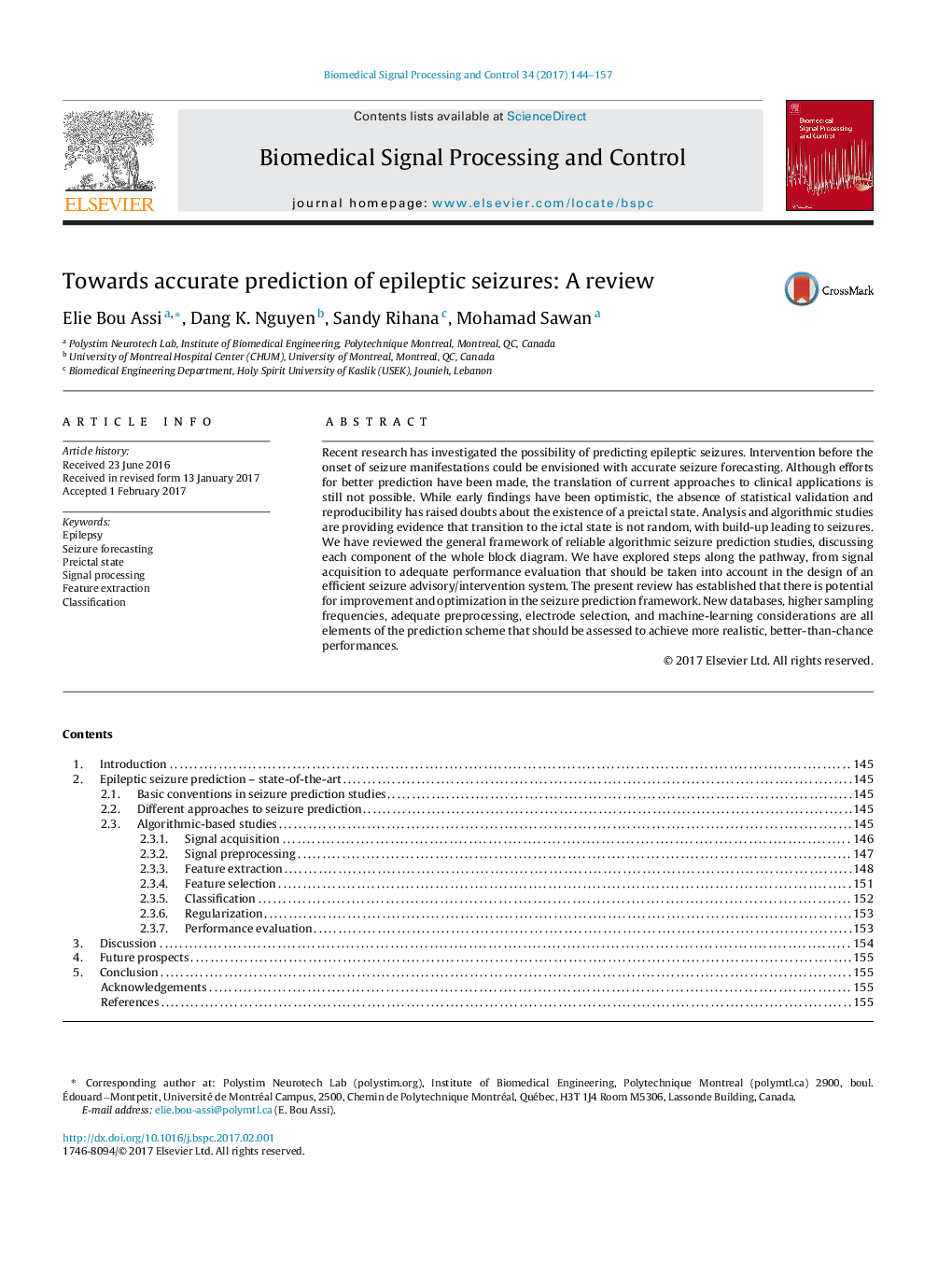| Article ID | Journal | Published Year | Pages | File Type |
|---|---|---|---|---|
| 4973568 | Biomedical Signal Processing and Control | 2017 | 14 Pages |
Abstract
Recent research has investigated the possibility of predicting epileptic seizures. Intervention before the onset of seizure manifestations could be envisioned with accurate seizure forecasting. Although efforts for better prediction have been made, the translation of current approaches to clinical applications is still not possible. While early findings have been optimistic, the absence of statistical validation and reproducibility has raised doubts about the existence of a preictal state. Analysis and algorithmic studies are providing evidence that transition to the ictal state is not random, with build-up leading to seizures. We have reviewed the general framework of reliable algorithmic seizure prediction studies, discussing each component of the whole block diagram. We have explored steps along the pathway, from signal acquisition to adequate performance evaluation that should be taken into account in the design of an efficient seizure advisory/intervention system. The present review has established that there is potential for improvement and optimization in the seizure prediction framework. New databases, higher sampling frequencies, adequate preprocessing, electrode selection, and machine-learning considerations are all elements of the prediction scheme that should be assessed to achieve more realistic, better-than-chance performances.
Related Topics
Physical Sciences and Engineering
Computer Science
Signal Processing
Authors
Elie Bou Assi, Dang K. Nguyen, Sandy Rihana, Mohamad Sawan,
